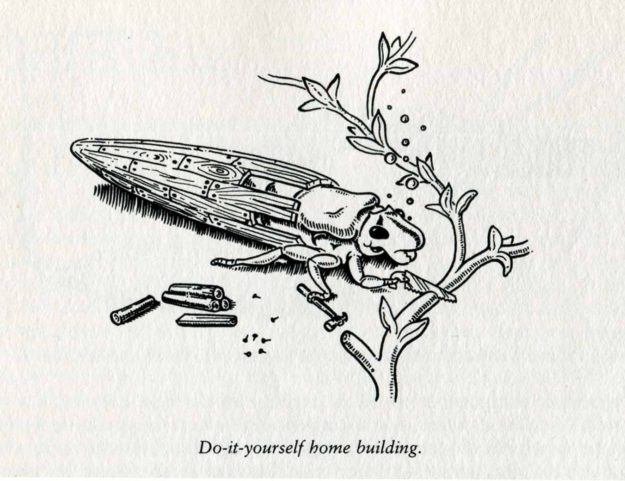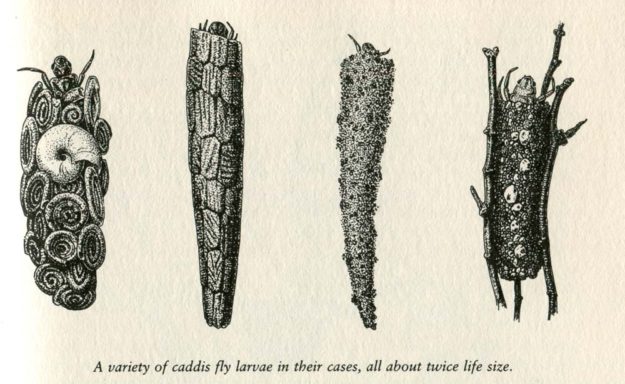Trevor Beebee, Pond Life, Londres, Whittet Books, 1988, p. 68-69.
Active mainly around dusk on warm summer evenings, the eggs are laid in or above water (into which they later drop) and these quickly hatch into larvae famous for the homes they make, sticking together bits of gravel, plant leaves or sand grains to create a safe havent hey then have to carta round with them. Look in the net for any suspicious, artificial looking structure with a hole in one end. When put back in water and left a few minutes, a head, some body and short legs will emerge and waddle away (case and all) if a caddis larva is in residence. These larvae are mostly vegetarian, but some are predatory and will, for example, catch and eat hatching tadpoles. There are nearly 200 species but each larva builds a distinctive style of home, so this one group where identification to species level is often easy. A proviso, though, is that caddis larvae may change plan if their preferred building materials are not to hand and this can occasionally confound reference to the standard texts. Indeed, a popular pastime of naturalists used to be gently deprive a caddis larva of its case and then provide it with bizarre objects (such as coloured glass beads) which are then used to create a spectacular new abode in the worst possible taste.

